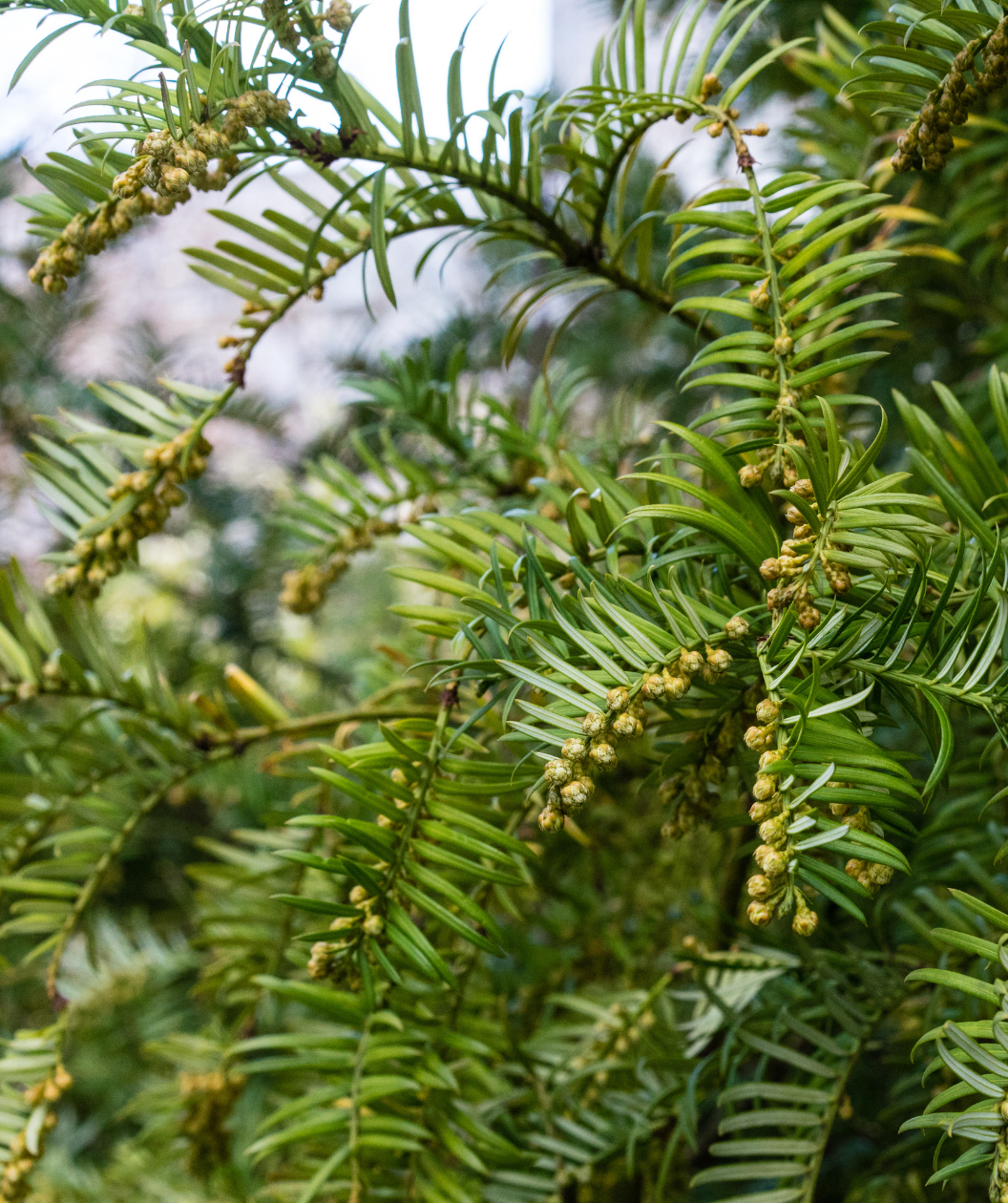


FEATURES:
- Hand Selected, Fresh from the Grower
- Ships on our trucks because of the size of the shrub - does not fit in a box
Growth Facts
- Hardiness Zone: 6-9
- Mature Height: 5-10' tall
- Mature Width: 5-14' wide
- Exposure: Full Sun/Part Shade
- Spacing: 5-15' apart
FEATURES:
- Hand Selected, Fresh from the Grower
- Ships on our trucks because of the size of the shrub - does not fit in a box
Growth Facts
- Hardiness Zone: 6-9
- Mature Height: 5-10' tall
- Mature Width: 5-14' wide
- Exposure: Full Sun/Part Shade
- Spacing: 5-15' apart
Why plant Japanese Plum Yew Big?
Well-designed gardens are pleasing to the eye all year long. They are said to have “good bones.” The Upright Japanese Plum Yew is an important tool to have in the toolkit when you’re trying to create a landscape that has good bones. Part of our Added Definitions line, this long-lived evergreen will give you a strong vertical element to use where you need a pillar-like effect. Plant one on either side of a path, doorway, or gate to turn a simple passageway into a grand entrance. A row of upright Japanese Plum Yews can also serve as an elegant hedge where space is tight.
Though it has only recently begun to get popular in gardens, the exquisite Upright Japanese Plum Yew has been around for a long time. It was introduced to the West by a German physician and botanist named Philipp Franz von Siebold in 1830. At the age of 27, von Siebold went to Japan to practice medicine and collect new plants. He was extremely successful on both accounts, introducing the Japanese to vaccinations and introducing a wealth of novel Asian plants to Europe. Unfortunately, he was caught with some maps of the country he wasn’t supposed to have and was kicked out of Japan after six years, accused of spying for Russia.
How to use Japanese Plum Yew Big in the landscape?
The Upright Japanese Plum Yew resembles the much more common Yews (such as Densiformis Yew) that you see planted everywhere as hedges, but there are some key differences. Japanese Plum Yew has longer, wider needles that present a distinctive look. And, whereas deer love to devour the foliage of regular Yews, they typically have no interest in browsing on Plum Yew.
Planting Zones
Hardiness Zone: 6-9
How To Plant Japanese Plum Yew Big
The Upright Japanese Plum Yew will grow in full sun, but this plant is usually reserved for shady gardens, because there are so few good evergreens for shade. Part shade is preferable, as deep shade may encourage spacey growth. The soil should be free-draining. Water regularly. Plum Yew is somewhat drought tolerant when established, but growth will be best with steady moisture (it is a rather slow grower even under optimal conditions). The plant becomes more rounded or vase-shaped in time; prune as desired. Unlike regular Yews, Japanese Plum Yew takes hot, humid weather in stride and is well suited to the South.
How To Fertilize
Incorporate Elements Starter Plant food granular form into the soil when planting. If planting in spring or summer, start fertilizing late fall using Elements Starter Plant food granular form on an annual basis each late fall. Continue this for the first three years to get your plant well established.




